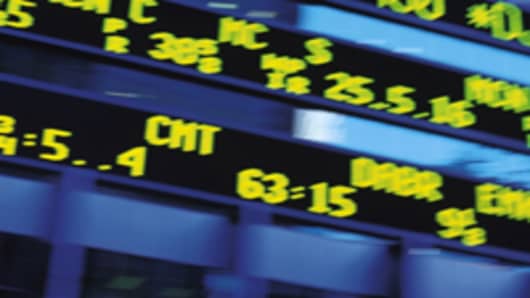“You need a dashboard to see how well we’re navigating the gauntlet this week,” Jim Cramer said Tuesday on CNBC’s “Mad Money.” And by gauntlet, Cramer was referring to the dizzying fray of reports investors will be awaiting from the Federal Reserve, the European Central Bank and the U.S. Labor Department — with that big Friday jobs number.
But the “Mad Money” host decided to share some of his secrets and explain how he tracks eight key sectors to determine just how the market might play out a day or two in advance.
Gold
First and foremost, Cramer always watches gold. He insists that every investor should not only own gold but also track the precious metal along with him — by using the SPDR Gold Shares Trust. Sometimes it’s hard to tell what gold is really measuring, especially when the commodity outperforms every other asset class in both good times and bad. But gold isn’t fickle, he said. At times, gold simply reacts to a given set of stimuli, and right now he’s waiting to see what signals it sends about Europe.
In the past, Cramer said, gold has served as a fairly accurate indicator of when Europe was about to make big moves to solve their problems, either by printing out more money or borrowing funds to buy sovereign debt. Gold prices almost always edge higher ahead of European moves that most investors would consider “positive,” such as bringing down Italian and Spanish bond yields, and they usually fall right before Germany vetoes an operation.
“That makes sense because right now, gold is serving as a barometer for inflation,” he said.
If the precious metal declines on Wednesday, Cramer said that’s a signal that “the era of unity and good feelings in Europe is off,” whereas a rally in gold should mean very good things for the market.
The Euro
As Europe continues to take center stage, Cramer said he likes to track theeuro itself, as measured by the CurrencyShares Euro Trust. He said he wants to see the euro hold above the $119.70 level since that marks the currency’s most recent low — just a little less than $3 away from it current levels. And since the $130 mark was where the euro last fell from, “any sign that we might get back there would be hugely bullish for the stock market and could take us to all-time highs,” he said.
Copper
Cramer also likes to keep an eye on copper. He uses the copper ETF known as the JJC as the best judge of actual industrial strength, since copper acts as a universal input for so many products and infrastructures. It’s also too big a market to be manipulated, he said. The JJC was last seen bouncing between $42 and $45 — and while the commodity refuses to break down, the $45 cap has proved to be “downright hellish” for the bulls. “Right now, the JJC is a push indicator and could go either way.”
Transportation
Next on the list is transportation. Cramer likes to track transports because he believes they’re a measure of shipping everything, from people to heavy cargo. He likes to watch the Dow Jones Transportation Average Index Fund to get a good sense of where the economy is. The IYT peaked in July 2011, took a huge swoon right after and ran slightly higher back in February. “That’s a lower high and it bothers me, given the strength we’ve seen in rails,” he said. “I need to see the transports regain that [July 2011 peak] before I can trust any turn in the economy.”



